
U.S. Marshals and the Pentagon Riot of October 21, 1967
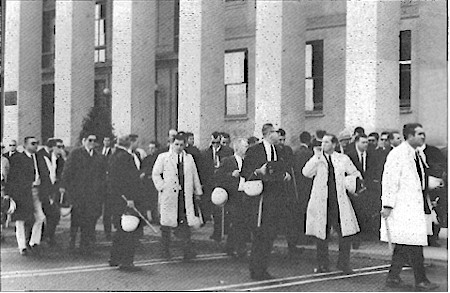
Anti-Vietnam war protesters rallied to Washington on Saturday, October 21,1967, in the first national demonstration against the war. The Mobilization Committee to End the War in Vietnam organized the protest to get national visibility for the anti-war movement. Nearby, military policemen stood at ten-foot intervals around the Pentagon. Within the circle of MP's, 300 U.S. Deputy Marshals spent the day waiting. The Deputies were on hand to make any necessary arrests, a civilian power not normally bestowed on the military. Hidden inside the Pentagon and other government buildings were five to six thousand Army troops armed with rifles and bayonets.
No one knew what form the anti-war protest would take, whether peaceful or violent. The picnic mood at the Lincoln Memorial changed during the long day of speeches and demonstrations. At 5:40 p.m., a determined crowd of 35,000 headed for the Pentagon. A smaller segment at the front stormed forward, scaled the walls, and; forced their way into the Pentagon. The Deputies and soldiers were taunted and assaulted with vegetables, rocks, and bottles. The troops inside the Pentagon rushed outside as the violence escalated. A full-scale riot erupted.
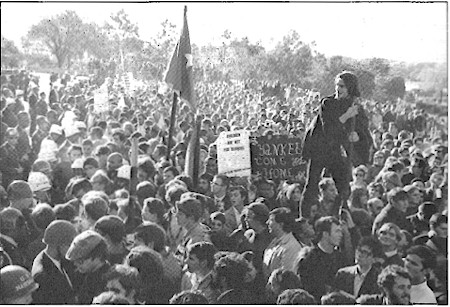
The riot lasted the night. The Deputy Marshals, acting as the civil authority of the federal government, made all the arrests. As soon as they were arrested, many of the demonstrators simply collapsed, forcing the Deputies to drag them to the waiting prison vans where other Deputies pushed and shoved the recalcitrant demonstrators aboard. The Deputies worked without relief, taking few breaks. Physically exhausted, they responded to the rioters with increasingly rough treatment, though remarkably few injuries. A total of 682 people were arrested. Forty-seven people-demonstrators, soldiers, and U.S. Marshals were injured. By 7:00 o'clock Sunday morning, most of the protesters had left; only 200 remained.
The October 1967 Pentagon riot, the first national protest against the war, exemplified the agonizingly divisive debate over Vietnam. Ironically, the demonstrators helped the federal government confirm its own commitment to civilian control. Civilian Deputy Marshals, not soldiers, arrested them. The Deputies were fulfilling the historic role of U.S. Marshals, for each arrest affirmed the enduring concept of civilian supremacy in the United States.
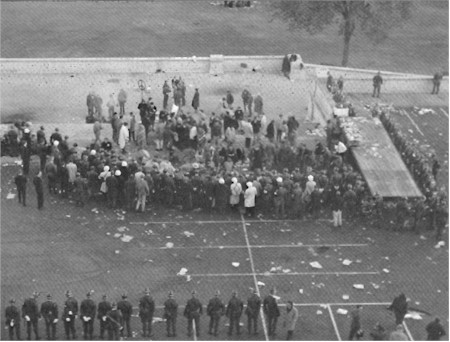
|
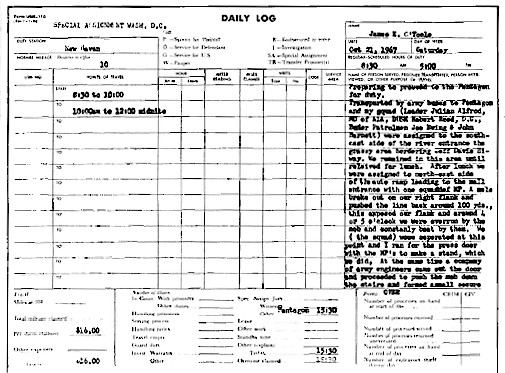
|
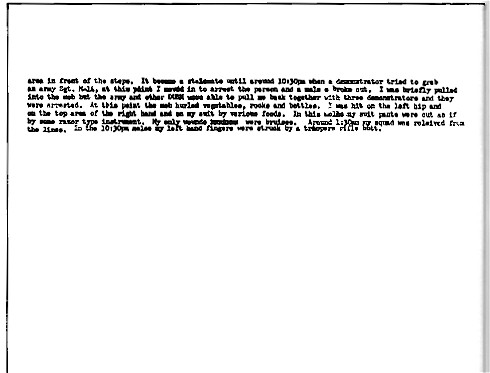 |
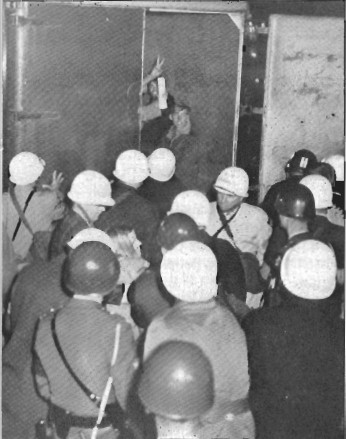
|

